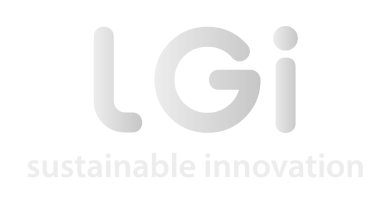The goals of the proposed Critical Raw Materials (CRM) Act are to strengthen all stages of the value chains, diversify, improve circularity and sustainability of CRMs, and enhance the EU’s capacity to monitor and mitigate risks associated with disruptions in CRM supply. The Act sets priorities for strategic metals, which are key for strategic technologies with applications in the green transition, digital technologies, defence and space. The 7 key takeaways of the CRM Act are the following:
1. Updated list of critical raw materials: The updated list now consists of 34 CRMs. The commission has proposed removing 2 materials from the 2020 list: indium and natural rubber, and adding six: arsenic, feldspar, helium, manganese, copper and battery-grade nickel. It should be noted that copper and nickel are not categorised as CRMs, but as strategic raw materials (SRMs). The definitions for these two categories are the following:
– Critical Raw Materials: raw materials of a high importance to the economy of the EU and whose supply is associated with a high risk. The main two parameters that determine the criticality of the material for the EU are: Economic Importance and Supply Risk. The list of CRMs is established on the basis of the raw materials which reach or exceed the thresholds for both parameters.
– Strategic Raw Materials (SRMs): Raw materials important for technologies that support the twin green and digital transition, as well as the defence and aerospace objectives.
2. Strategic raw materials included: For the first time, the EU defines essential materials to its wider strategic goals – based on their contribution to the green & digital transition as well as defence & space applications.
3. New targets: A goal has been set to reduce the EU’s dependence on imported SRMs, with an article laying out 2030 benchmarks for the EU to: a) extract 10% of its annual consumption domestically, b) process 40% of annual consumption, and c) source 15% from recycled material. Moreover, there is a targeted limit of max 65% of the EU’s annual consumption of a single SRM sourced from a single third country.
4. Strategic projects: The commission has proposed designating “strategic projects” – similar to existing ‘projects of common interest’ that will benefit from shorter permitting processes and possible funding support from the EU. Developers of strategic processing or recycling plants would be guaranteed a permitting decision within 12 months of applying, while new strategic mines would have a maximum delay of two years.
5. Recycling: Every three years, EU countries would have to adopt a plan to increase the recovery of CRMs from waste through more recycling and reuse, including potentially adding requirements for public procurement. Measures could include financial incentives (discounts, monetary rewards or deposit-refund systems) to encourage the re-use of products with high CRM recovery potential & collection of waste from such products. It should be noted that the definition of waste is not specified in the CRM Act.
6. Environmental footprint: The Commission proposes to set rules calculating the environmental footprint of CRMs if deemed necessary and proportionate to meet the EU’s green goals, without disproportionately impacting the ability of the Union to source the CRM in question.
7. Exploration & resource mapping: EU countries would be required to present national programmes to explore CRMs, on new domestic projects and on their stocks of SRMs with reviews every five years. Those plans could be later integrated into an EU-wide database to help coordinate cross-border projects. Large companies would have to carry out a supply chain audit every two years to show where they source their SRMs and to stress test their current supplies.
Innovation in the raw materials sector
Innovation in the raw materials sector has increased significantly during the last few years. The raw materials needed to build new infrastructure are often in short supply, nonrenewable and non-replaceable. The security and sociopolitical aspects of upcoming supply lines may also be impacted by several issues related to material extraction and processing activities. The three main production process indicators where innovation is going to play an important role are:
1. Overall supply risk: aims at quantifying the potential risk of a disruption occurring inside the supply chain of materials, by taking into account the current locations for sourcing supplies as well as the governance and trade characteristics of those areas
2. Environmental effects of raw material sourcing: aims at identifying any potential local environmental harm that could result from the extraction and processing of raw materials for a particular process
3. Challenges to environmental justice at sourcing locations: attempts to determine how (un)just the sourcing of raw materials is for a specific process
Our value proposition
The work of LGI aims at providing solutions on these three main indicators, combining complementary expertise, experiences and resources. A strong emphasis is put on:
1. Innovation impact: design thinking methodologies and workshop facilitation throughout the innovation cycle
2. Value chain of raw materials: market analysis and risk identification aligned with the requirements UNGPs/OECD Multinational Enterprises Guidelines on environment and human rights due diligence
3. Circular economy: LGI helps identify circular opportunities to move to a more responsible value chain, such as battery re-use, remining, and recycling of secondary products.
The combination of innovation in the raw materials sector, the implementation of the Critical Raw Material Act, and the offering of innovative solutions are profoundly changing the industry and ensuring a sustainable and secure supply of critical resources for the future.
LGI is involved in several EU projects related to sustainable raw materials, such as ION4RAW, EIS, SCRREEN2, BIORECOVER, Africamaval, and Maditrace.
Feel free to contact us if you’d like to work together in this field!

Ionnis Poulopoulos
The views and opinions expressed in this blog post are solely those of the original author(s) and/or contributor(s). These views and opinions do not necessarily represent those of LGI or the totality of its staff.




FOLLOW US